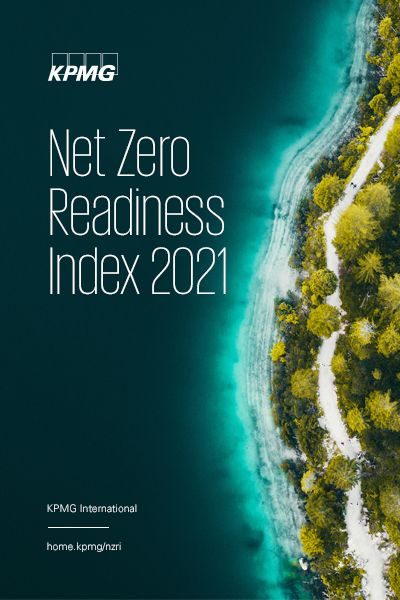Innovative technologies and multilateral support will be critical to helping the country reach Net Zero given Nigeria’s economic reliance on fossil fuels, high population growth and the need to connect tens of millions to reliable electricity supplies.
Economic exposure
The UN expects Nigeria to become the world’s third most-populous country by 2050, with its 2019 population projected to double to around 400 million.1 It is reliant on fossil fuels at present and other countries’ race to meet Net Zero commitments, particularly the adoption of electric vehicles, may paradoxically impact the ability of Nigeria to achieve its targets, if falling oil exports reduce government revenues.
However, Segun Sowande, Head of Management Consulting and Lead Partner for Energy and Natural Resources, KPMG in Nigeria, says the government has set clear targets for reducing emissions and has tried to integrate these with economic recovery plans. The country has committed to reducing greenhouse gases by 20 percent by 2030 with the aspiration to increase this to 45 percent with international support.2 “How does Nigeria create an economy where renewable energy and Net Zero initiatives become catalysts for lifting people out of poverty?” he asks. “It will be a game changer if that happens, but that is going to require disciplined internal alignment alongside external, multilateral support.” Nigeria could serve as a test case for the rest of Africa given the likely impact, he adds.
Energy security
More than 90 million of Nigeria’s 210 million population have no access to electricity3 and tens of millions more suffer from unreliable connections. “Solving these fundamental issues of energy access come ahead of Net Zero but are not mutually exclusive,” says Sowande.
For example, the country could ‘leapfrog’ energy technologies by moving straight to cleaner energy and renewables. For example, Lumos, a Dutch-headquartered company, offers Nigerians a home solar panel and battery pack system with payments made by text message through the MTN mobile network.4 The government has also established Solar Naija as part of its work to support the economy’s recovery from COVID-19. The purpose of this program is to provide cheap credit to install solar systems in 5 million homes that are currently not grid connected.5
Nigeria has committed to ending gas flaring, where natural gas that can be collected from petroleum production is instead burnt, with fines for this increased by up to a factor of 80. In March 2021 the country pledged to further accelerate the move of home cooking from kerosene and charcoal to cleaner fuels such as cooking gas. For this purpose, the Nigeria Liquefied Natural Gas company (NLNG), which is jointly owned by the government and three international oil companies, has committed to increase domestic liquefied petroleum gas supply to 450,000 million tonnes annually, an increase of over 60 percent.6
Industrial use of natural gas, which has been limited by pipeline vandalism, is also being encouraged by ‘virtual pipelines’ through which gas is compressed or liquefied and transported to sites by road for regasification and use.7 NLNG is transforming this space with three new agreements to supply 1.1 million tonnes of liquefied natural gas to the domestic market, marking a significant shift from its previous export-only LNG supply market.
Agriculture and transport
On agriculture, land use and forestry, Marilyn Obaisa-Osula, Associate Director, ESG and Sustainability, KPMG in Nigeria, says that there has also been an increased push for diversification of a heavily fossil fuel dependent economy. Agriculture supports the majority of Nigerian people and it is the largest contributor to its GDP, accounting for 22 percent in the first quarter of 2021.8 Increased focus on the sector will not only reduce fossil fuel dependence, it will also lead to opportunities for climate-smart agriculture practices.
This trend is being embraced by emerging agritech startups, donor-funded and government-supported farms businesses, and selected small and medium sized enterprises in the sector. They have been able to use practices such as agroponics, a type of hydroponics, to grow vegetables; integrated farming that promotes a circular economy, used in the resuscitation of Nigeria’s Songhai farms project;9 sack farming which uses drip irrigation; and the use of smart devices to evaluate the state of a farm, such as from Nigeria-based service Zenvus.10
Transport is currently reliant on private cars and buses, including many second-hand imports which are less efficient than newer models. However, Nigerian conglomerate Stallion recently started assembling Hyundai Kona electric cars in the country, with the Vice-President taking one for a test drive in June 2021.11 KPMG in Nigeria believes that, given the current lack of charging infrastructure and the country’s access to and reliance on fossil fuels, hybrid vehicles may be favored over all-electric vehicles in the short to medium term. Better public transport services are also under development with Lagos, Nigeria’s largest city, due to see two lines of a long-planned urban rail system opening at the end of 2022.12
Nigeria has committed to a wide range of sectoral adaptation and mitigation plans under its climate change policy and response strategy. However, the country’s success will largely be dependent on disciplined execution and sustained international support in the face of many competing economic and social priorities.
1 ‘World Population Prospects 2019’, UN Department of Economic and Social Affairs, 2019. https://population.un.org/wpp/Publications/Files/WPP2019_Highlights.pdf
2 Vivian Chime, ‘Explainer: what is Paris climate agreement and is Nigeria on track to meet its targets?’ The Cable, 10 May 2021. https://www.thecable.ng/explainer-what-is-paris-climate-agreement-and-is-nigeria-on-track-to-meeting-its-targets
3 Muyiwa Adeyemi, ‘90 million Nigerians lack electricity supply, says Fashola’, The Guardian (Nigeria), 6 March 2018. https://guardian.ng/news/90-million-nigerians-lack-electricity-supply-says-fashola/
4 ‘How to pay for your Lumos yellow box’, Lumos, accessed July 2021. https://www.lumos.com.ng/h2pmd/
5 ‘Solar Power Naija – enabling 5 million new connections’, Nigerian Rural Electrification Agency, accessed July 2021. https://rea.gov.ng/solar-power-naija/
6 ‘Marketing’, Nigeria Liquid Natural Gas, accessed July 2021. https://www.nigerialng.com/operations-strategies/Pages/Marketing.aspx
7 Paul Carsten and Camillus Eboh, ‘Nigeria LNG road delivery scheme to provide cheaper fuel’, Reuters, 29 August 2017. https://www.reuters.com/article/us-nigeria-energy-idUSKCN1B92HT
8 'Nigerian Gross Domestic Product Report', Nigerian National Bureau of Statistics, May 2021. https://nigerianstat.gov.ng/download/1241027
9 Ann Godwin, ‘Rivers: 34 years after, Songhai Farm returns to life’, The Guardian (Nigeria), 6 September 2020. https://guardian.ng/features/rivers-34-years-after-songhai-farm-returns-to-life/
10 Zenvus, accessed July 2021. https://www.zenvus.com/
11 ‘Locally assembled Hyundai Kona fantastic, says VP Osinbajo after test-drive’, Stallion Group, 17 June 2021. https://stalliongroup.com/blogs/ocally-assembled-hyundai-kona-fantastic-says-vp-osinbajo-after-test-drive/
12 Chike Olisah, ‘Lagos says blue, red rail lines will be ready by December 2022’, Nairametrics, 25 February 2021. https://nairametrics.com/2021/02/25/lagos-says-blue-red-rail-lines-will-be-ready-by-december-2022/





